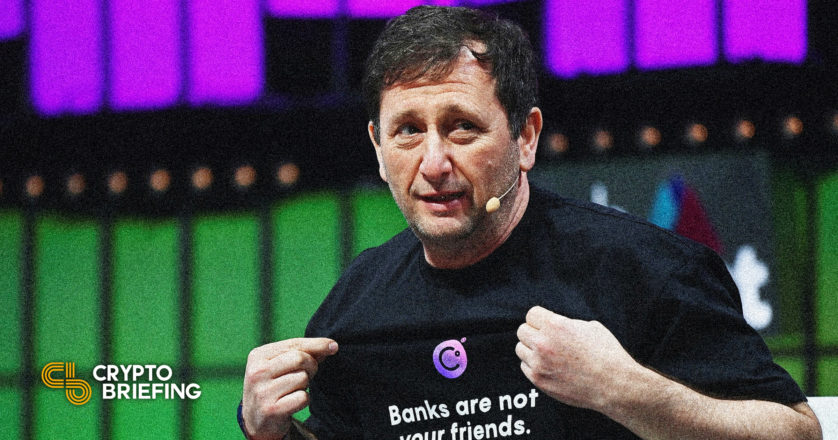Celsius Had Double the Risk Profile of Traditional Banks: Report
The crypto lender reportedly made significantly undercollateralized loans and illiquid investments, leaving only a small buffer in case of a downturn.

Key Takeaways
- A new report by The Wall Street Journal claims that Celsius took on significantly more risk than it had publicly alluded to.
- Before it raised new funds last summer, the lender's assets-to-equity ratio was reportedly 19:1—almost double that of the average U.S. bank.
- The documents seen by The Wall Street Journal also allegedly reveal that Celsius sold undercollateralized loans and rehypothecated the posted collateral.
Share this article
Contrary to Celsius CEO Alex Mashinsky’s claims that Celsius was “not taking a tremendous risk,” a new report from The Wall Street Journal claims that the crypto lender had more than double the risk profile of the average U.S. bank.
Celsius Took More Risk Than Banks, WSJ Claims
Celsius investor documents have revealed that the crypto lender was almost twice as leveraged as traditional U.S. banks, The Wall Street Journal has reported.
According to a report published Wednesday, the beleaguered crypto lender had approximately $19 billion in assets and $1 billion in equity before it raised new funds last summer. This put its assets-to-equity ratio—generally seen by regulators as a benchmark risk indicator—at 19:1. Traditional U.S. banks have a median assets-to-equity ratio of around 9:1, indicating that Celsius was twice as levered as regular banking services at the time the data was gathered.
Furthermore, investor documents cited by The Wall Street Journal allegedly show that Celsius sold undercollateralized loans, requiring business borrowers to post roughly 50% collateral for their loans. The report claims that Celsius then used the collateral to borrow even more money. This update contrasts numerous claims from Celsius CEO Alex Mashinsky that the firm had not made any undercollateralized loans. Mashinsky has also repeatedly claims that his firm took significantly less risk than banks while providing significantly higher returns to its depositors.
For example, Mashinsky told CoinDesk in July 2020 that “Celsius does not do non-collateralized loans” because “that would be taking too much risk” on behalf of its depositors. Moeover, in a November 2021 debate with the Bitcoin skeptic Peter Schiff, Mashinsky said that Celsius was taking a large amount of risk with its lending practices. “We’re not taking tremendous risk,” Mashinsky said, answering Schiff’s question about how Celsius could generate such high yields.
On Jun. 13, Celsius halted all customer withdrawals, swaps, and transfers, citing “extreme market conditions.” The move came amid a significant market drawdown that led to a “bank run” on the firm’s deposits and its inability to honor customer withdrawals due to liquidity issues. It’s widely speculated that a primary cause for Celsius’ liquidity crisis is the liquidity mismatch between the market liquidity of assets like staked ETH and the funding liquidity of liabilities like ETH. To generate yield on its ETH deposits, Celsius allegedly staked the ETH on Ethereum’s Proof-of-Stake-based Beacon Chain, which cannot be unstaked until after the blockchain completes its “Merge” to Proof-of-Stake. Staking on the Beacon Chain could therefore prevent the firm from honoring ETH deposits.
The move to halt withdrawals to protect depositors has still not been revised, and the company has reportedly hired restructuring consultants to advise on a potential bankruptcy filing. Until it started facing liquidity issues earlier this month, Celsius was one of the biggest crypto lenders, boasting around $20 billion in assets under management at its highs.
Disclosure: At the time of writing, the author of this piece owned ETH and several other cryptocurrencies. Crypto Briefing has previously run sponsored content from Celsius.
Share this article
